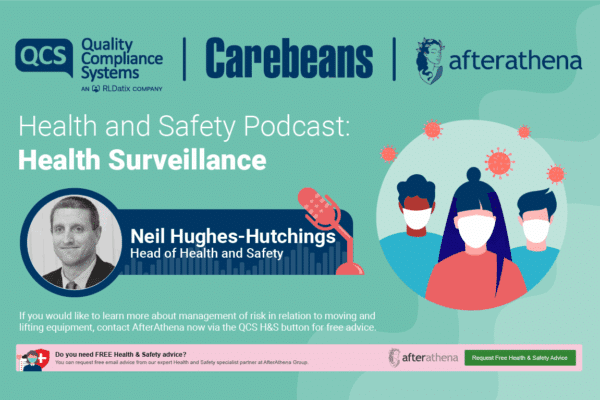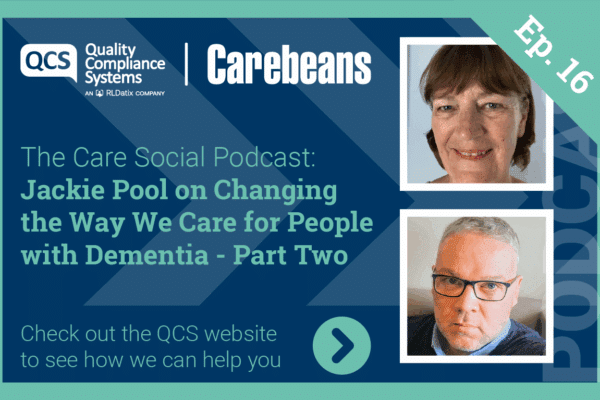
- Managing health and safety
- Reporting of incidents
- Moving and handling
- Equipment safety
- Safe use of bed rails
- Slips, trips and falls on the level
- Falls from height
- Hazardous substances, infections and diseases
- Legionella
- Hot water and surfaces
- Work-related violence and aggression
- Work-related stress
- General work environment
- General welfare
Managing health and safety
The HSE revised the guidance HSG65 Managing for health and safety to include the methodology of ‘Plan, Do, Check and Act’ which guides a business towards achieving a balance between the systems and behavioural aspects of management. In care homes this is crucial in ensuring that health and safety is implemented in an effective way, supporting the holistic approach that to its residents, it is their home, not just a business, and needs to feel as such. Health and safety needs to be implemented in a subtle, practical and sensitive way. It must not be used as a reason by management for not providing activities such as painting, cinema, dancing or other such activities. A considered and sensitive approach needs to be taken when dealing with requests for activities. The way forward is to conduct a risk assessment and put the necessary controls in place to eliminate or minimise any potential hazards created as a result of activities.
Reporting of incidents
The care home has a duty to record and report specific incidents under the Reporting of Injuries, Diseases and Dangerous Occurrences Regulations 2013 (RIDDOR). Near misses, incidents, dangerous occurrences and other specific incidents should be reported by staff and recorded and investigated by the care home. A full investigation should be carried out to understand the root causes of the incident to prevent it from occurring again. Analysing incident trends and using the data in monthly meetings will help ensure any reoccurring near misses are investigated before an incident can occur. The following are some of the points to consider when carrying out an investigation:
- Statement to be taken from the injured person
- Statement to be taken from any witnesses
- Photographs taken of the area where the incident occurred as soon as possible – this will give a better view of how the area was if the incident is severe enough to result in an external formal investigation by the enforcing agencies
- Documentation showing schedules of inspection where equipment was involved
- Current risk assessments of the work activities at the time of the incident. Once an incident has been fully investigated all risk assessment will need to be reviewed
- Evidence that monitoring of the workplace has occurred – inspections completed in the current year by both internal and external competent personnel
- Documentation demonstrating that staff are competent in carrying out the work activities that led to the incident. Evidence of information, instruction, training and supervision will be necessary.
- Checks to find if this particular incident has occurred before and what actions were taken
- Details of the personal protective equipment worn, if appropriate
- Any external factors that may have contributed to the incident, such as weather conditions
Once a full investigation is completed the care home needs to action any recommendations and alert staff to the finding of the investigation. The investigation report needs to be signed and dated as closed.
Moving and handling
Individual, person-centred manual handling risk assessments should be carried out and recorded. Every resident requires their own risk assessment as everyone is unique. Some of the different areas to consider in the risk assessment are:
- The age and gender of the resident – how much support will they need
- Medical conditions which may impact on their ability to move
- Effects of medication
- The mental capacity of the resident
- Limited ability to carry out personal daily care due to mobility, requiring more support with the use of slings
- The ability of the senses – sight, hearing, taste, touch and smell. This may be reduced in some residents
- Limited ability to respond in an emergency such as fire
- Any medical treatment or devices used, such as bed rails or catheters. This will need to be taken into account when lifting or moving
All staff should receive manual handling training and training in the use of specific equipment such as slings. In addition, load handling assessments must be recorded for all manual handling work activities. All completed risk assessments must be communicated to staff.
Equipment safety
All equipment used in the care home must be logged and maintained according to legal requirements and in line with manufacture’s recommendations. A list of all items of electrical and other equipment and plant in the care home is required. This asset register should have the details of the schedules for all service checks to be carried out externally or internally by a competent engineer. Lifting equipment will need statutory inspections and service maintenance records completed. Specific work equipment instruction, information, training and supervision should be in place for all staff who use the equipment. Electrical equipment will require portable electrical testing and other specific inspections. Visual inspections should be undertaken by all staff before they use any item of equipment.
Safe use of bed rails
Bed rails are both work equipment and medical devices. If bed rails are required an assessment needs to be undertaken, with all potential hazards risk assessed. If bed rails are used the home must ensure that there is a planned inspection regime in place to check that they are not causing entrapment of the resident. All staff need to attend training on the safe use of bed rails.
Slips, trips and falls on the level
Residents may have limited mobility, reduced eye sight and be on medication which will put them at risk of slips, trips and falls. All staff need to be vigilant in ensuring that the care home environment does not cause increased risks to resident. Good housekeeping and a ‘clean as you go’ policy will help reduce the number of slips, trips and falls. Ensuring that residents are wearing the correct footwear will play a part in being able to walk safely. Slips, trips and falls can also occur outside the building in the garden and car park. Inspections of the boundary need to be planned for and undertaken on a regular basis. Simple actions such as sweeping away leaves which are a slip hazard need to be undertaken regularly.
Conclusion
This is the first part of a two-part series on the management and implementation of health and safety in the care home, based on the HSE guidance.
QCS provides full health and safety management systems to help your business support the management of health and safety in care homes.
References
Health and safety in care homes
Managing for health and safety
Information of the Health and Safety at Work Act 1974
The Reporting of Injuries, Diseases and Dangerous Occurrences Regulations 2013






